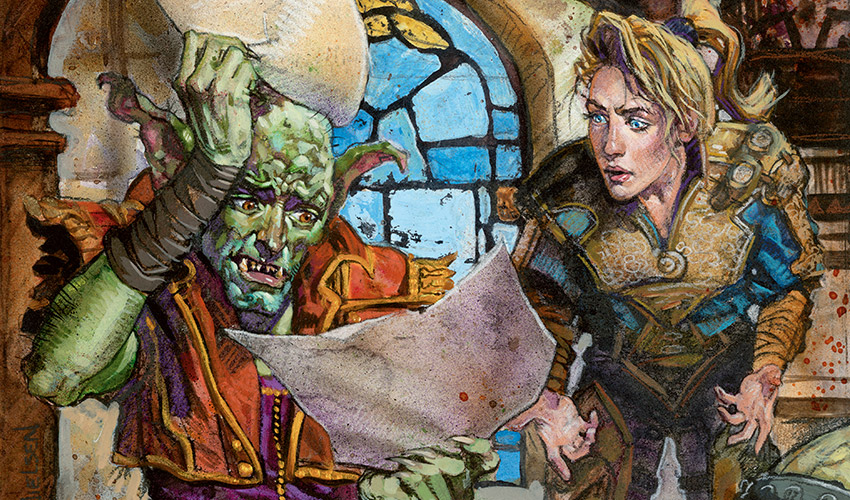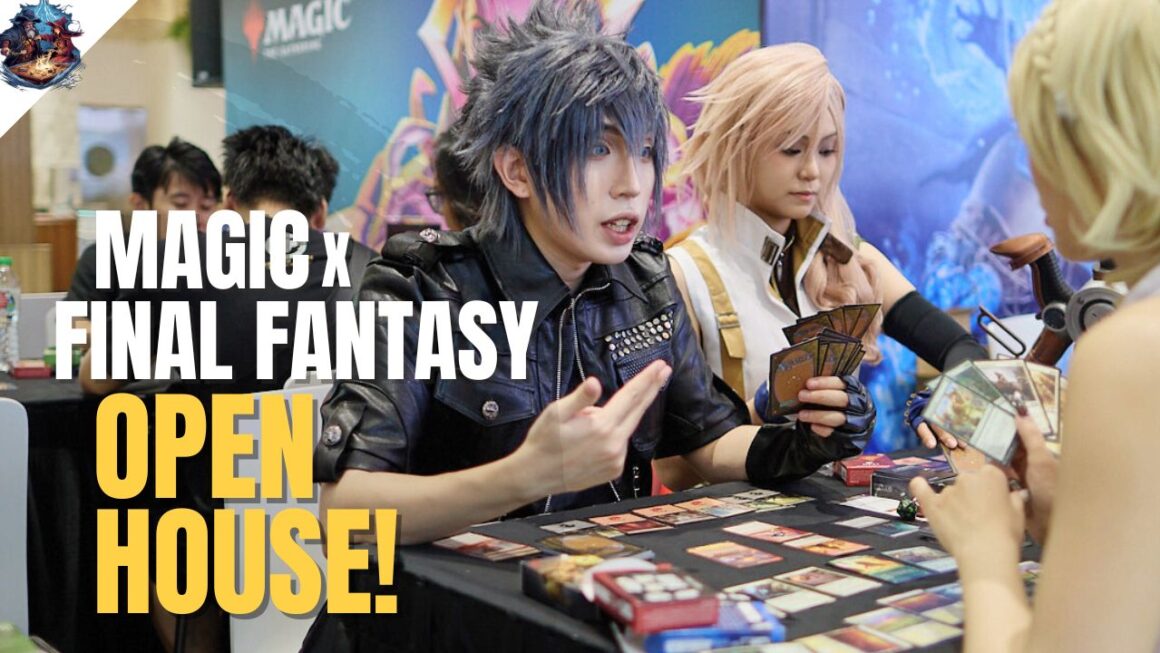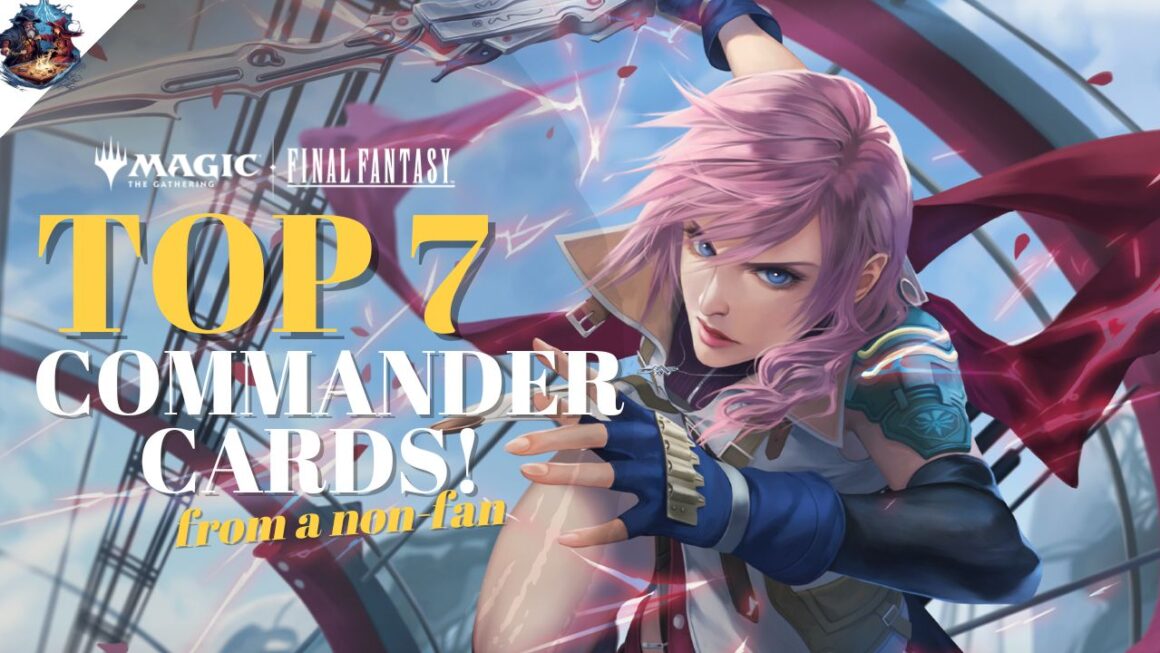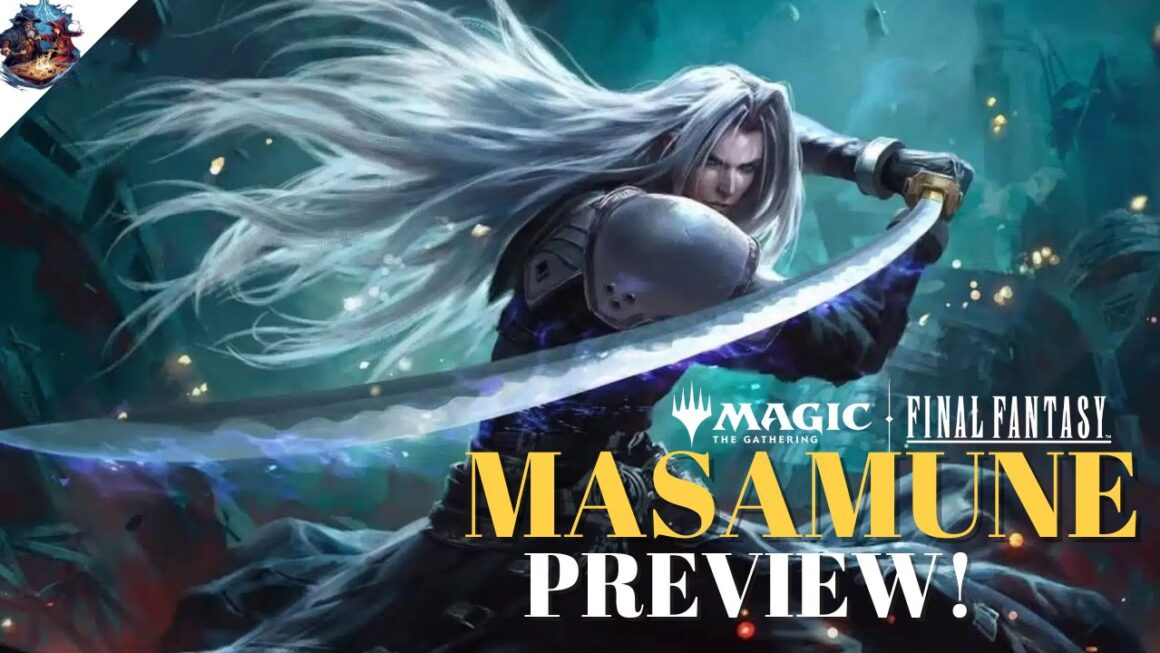At some point, all players have tried to get friends to join us in this intricate game. How many of them have stayed all the way through? We look into the barriers beginners face – preventing their Planeswalker spark from igniting – and explore solutions to help them break through.
Barrier 1: Magic Can Get Complex

Newer players tend to be privy to simpler strategies. Overwhelming them with information or complexity makes the game seem overly complicated and inaccessible. For example, telling them about “stack” rules will confuse them when they are still trying to remember the different phases in a turn. Focus on keeping a high level of fun with the cards/strategies that they like.
Your Local Games Store (LGS) will often have free welcome decks for new players. These decks are not designed to be competitive, but are simple to pilot and fair to play against each other. They are effective to teach the most basic rules and skills to play a game of MTG.
Take things slow, and keep the fun to the kitchen table when starting out. Introduce the game in a friendly, low stress environment.
Barrier 2: Overwhelmed By Older Players

New players can feel they wear out the patience of a more established player. Worse, they might get intimidated after getting thrashed by a seasoned opponent. Even supposedly friendly Friday Night Magic events at the LGS can be daunting for the new player.
We should introduce new players to the game in a comfortable setting, without the stress of an organised event. Let them play with a friendly mentor who they are comfortable with. Ideally, they should also have a play partner with equivalent proficiency in the game.
This allows the newbie to explore the game in a safe space. Once they are comfortable, they can begin to venture into the wider MTG community.
Barrier 3: Magic Can Get Very Expensive

MTG is definitely a potentially expensive hobby, however it doesn’t need to be, especially for casual play.
The MTG price tag is linked primarily to the prevalence of competitive gameplay within the community. Modern and Standard format staples can come to $40++ per card at times. Buying into a play-set of these cards can bump deck prices into the hundreds.
Internet resources also tend to point players to powerful expensive staples, even for the Commander format.
Within casual playgroups however, the main driver of price, tends to be “the arms race”. To improve their decks, players typically search for optimal versions of cards. As the cards become more efficient, the pace of the game increases and small inefficiencies begin to hurt decks which are built on smaller budgets.
For players not willing to put in the financial investment into their casual deck, friends can help them by limiting their own decks to be of a similar power level. Keep new players welcome at the table. We also have some neat tips on cheap ways to play MTG.
What is the lowest price point to have a focused fun deck to play?
MTG Goldfish releases sample casual deck-lists under $20 for standard with each set release. The decks are very focused and will reward skillful play when pit against each other.
A skilful player will also be able to make a Commander deck with a relatively focused game-plan for about $25-30. Help your friends out if they’re new, or persuade them invest in a pre-constructed deck (typically $40-70) . A further $20 investment from there will likely yield huge improvements to deck consistency, after which there will be diminishing returns.
More competitive newbies might prefer a different approach. MTG Goldfish runs “Budget Magic” showcasing semi-competitive decks built for under $100. Challenger decks, which are focused, but not optimised, are competitive standard decks for roughly $40-60 and are also available at the LGS. Both of these are viable for entry into the competitive MTG scene.
Barrier 4: Nostalgia
This refers to players who had abandoned the game for a very long period of time, and returned due to nostalgia. They essentially become “newbies” once again. But nostalgia can actually cause them to leave the game again, as it has changed much over 25 years.
Some of these players find joy in casual play styles, simply cracking open booster packs, playing with whatever they have, and not being burdened by today’s deck building guidelines.
Sadly, time moves ever forward. It will be difficult for these players to find like-minded playgroups, except amongst themselves, as the competitive scene grows every bigger.
The most compatible format for returning players will be Commander. However, the power level of their decks will likely be very low. Keep the games casual and cater to their power level, enjoying it as a friendly distraction during a social meetup. They might eventually want to streamline their decks and participate in matchups with a higher power level.
Barrier 5: Lack of a Diverse Community

One of the biggest barriers right now is that competitive MTG is heavily dominated by male players. Sadly, it is a rare sight to see women even at a LGS’s weekly event.
For the new female player who might be concerned about this, it is important to reiterate that there is a space in the MTG community for everyone. Everyone is free to play with their preferred social group.
Try to provide new players with a partner or playgroup that meets their social needs. Communication is everything. More enfranchised friends can have different decks that suit different playgroups, thus preventing their less vested friends from feeling ‘left behind’ and giving up the game completely. Remember that MTG is for everyone, regardless of race, gender identity or age. Everyone interested to play should feel welcome.
Having role models is also a good way to remind new players that MTG is for everyone. Beginners can look up Ally Warfield’s stream for inspiration, or check out the Lady Planeswalkers Society which might have a chapter in their location . Popular shows like Game Knights also feature have celebrity guests like Cassius Marsh (NFL player), or Ashlen Rose (Cosplayer and Voice actor) to showcase diversity in MTG.
Barrier 6: Magic Is “Boring”

After playing their first few games, or observing the patterns of competitive games, some new players feel that MTG is boring, luck-based or pay-to-win.
Yes, luck plays a part and MTG costs money, but it is far from boring. There are several paths to win a game, and make for diverse playing experiences. Similarly, there are also different formats that cater to player preferences. Each format has its strengths and weaknesses, and there is one for every kind of player.
Firstly, players who enjoy consistency and repetition to develop mastery will enjoy more competitive formats like Standard or Modern. From there, their preferred play style will point them to investing in the appropriate meta deck of their choice or to brew for their preferred style.
Next, players who enjoy flavour, fun effects and creative expression will find Commander more enjoyable. The slower format, massive card pool, and multiplayer aspect allows for more janky interactions to exist.
Lastly, players who enjoy having a new deck each game, a level playing field without the pay-to-win aspect, or to fully appreciate the flavour of a set, might prefer Draft/Sealed. All cards in the set have a purpose and everyone is on a level playing field in terms of card availability.
Magic allows anyone to play the way they prefer, new players should explore each format and eventually settle on formats that they enjoy.
End Step: What It All Means
First and foremost, be sensitive to a new player’s needs when introducing them to the game. Each person is different so it is important that mentors are sensitive to the needs of each individual. Figure out the barriers your friends face, and find the appropriate method to help them.
That said, some just won’t be interested in the core concepts of MTG. To each their own, it is important to respect the opinions of others.
What other barriers do your friends encounter in the game? Comment below and we’ll see if we can help find a solution, or you can also e-mail us privately.
This article was edited by Myrea.



